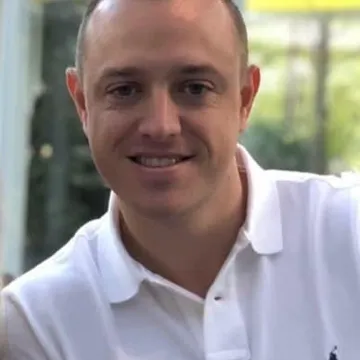Join the Team: Digital Preservation’s potential for ambitious innovators
 David Portman
•
December 7, 2017
David Portman
•
December 7, 2017
Interview with Jon Tilbury, Preservica CTO
Preservica is in an exciting stage of growth and innovation, and with that comes an extensive recruitment program. CTO Jon Tilbury is in the process of establishing a team of Innovation Software Engineers to explore new technologies and show how Preservica’s leading Digital Preservation product can be used in new ways and new markets.
We caught up with Jon as he explains why innovators should consider a role in the Innovation Team at Preservica, a Gartner-recognised ‘Cool Vendor’.
Why apply?
This is a hugely exciting opportunity that combines technical know-how, creativity, creating quick results and communicating effectively to make a significant change to not just the company, but its customers and the wider market too.
What technical skills does the applicant need?
The technical skills we are looking for are wide and likely to get wider. Our system is developed in Java hosted in Tomcat but you should also understand how to use APIs and to write interfaces between systems. A thorough understanding of how to manipulate information held in XML and file base unstructured data is essential.
What types of applicant do we want to hear from?
You should be creative, productive and outward going and thrive on showing how your work can change the direction of the company. The ability to tell a good story, and deliver PoCs on that story will be a great help.
What does the job entail?
You will be joining a small high energy and innovative team reporting to the Chief Technology Officer that delivers proof of concepts, demonstrators and reports. Your focus is on quick turnaround using a wide range of technologies, getting to understand the possibilities these offer, and using your imagination to create ways to demonstrate these opportunities internally to the Product and the Marketing teams and externally to customers, prospects and analysts.
Tell me about the company culture
It still feels as though we are in exciting start-up mode, despite having established technology that is the world’s best at preserving information with some amazing brands and institutions. We are highly successful in our core markets, partnering with some of the largest IT companies including AWS and Microsoft, but as a company of less than 100 staff, we have an agile and dynamic company culture.
Tell us about Digital Preservation
Digital Preservation is the active practice of making sure digital content remains accessible and usable, and it has come a long way since the early research projects. The earliest practitioners were academics and specialists who set this field in the right direction and contributed hugely to defining what Digital Preservation is, creating the language of SIPs and DIPs, ingest and dissemination and preservation planning that we all use today. This journey will be complete when information is preserved without the need to understand how and long-term retention and use is just another tick box in your day-to-day IT platform.
What makes Digital Preservation technology roles unique and exciting?
We are looking for creative Innovation Software Engineers to work in our Innovation Team to explore new technologies and show how our leading Digital Preservation product can be used in new ways and new markets. To take us into new markets we need to explore using our technology differently including linking it to third party data sources and consumers, processing data in new ways and exploring, monitoring, and writing reports on emerging technologies. Current examples we are exploring include automated harvesting of data from Content Management Systems, using artificial intelligence to automatically classify information, and looking at how we can use blockchain technology to enforce non-repudiation.
Why is the market at such a critical stage?
The trouble is that many of the world’s organizations do not think like cultural heritage curators. They don’t want to decide what needs to be preserved other than defining some rules describing what sort of information needs to be kept. They don’t want to think about multiple copies in multiple locations, the system should do this for them. And they don’t want to think about file formats, the system should constantly reset the format to match the technology they are using.
How will Digital Preservation go mainstream?
Bridging this divide is the remaining challenge of Digital Preservation technology and one my innovation team at Preservica is currently working on. It requires operational and preservation systems to be seamlessly linked using machine intelligence to decide what needs to be kept, and requires preservation planning and action to be automated. This latter challenge will shift the current community of academics, practitioners and vendors to cooperate on discussing and agreeing the best identification tools, the significant properties to be extracted and the best migration strategies. Once agreed, this advice will be automatically sent out and, for those users that choose, will be automatically applied.
What does the future look like?
My hope is that using these advances Digital Preservation can become truly ubiquitous. It will move beyond those in the know to those with the need. At first it will be built in to information systems to preserve corporate memory, but will soon become part of the consumer technology landscape, harvesting our digital lives and preserving it for the future. The irony is that my dream of making Digital Preservation truly widespread will only be delivered when we don’t even know it is happening.
Jon Tilbury is CTO at Preservica. You can find out more about exciting career opportunities within his Innovation Team by clicking here.




